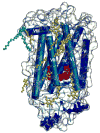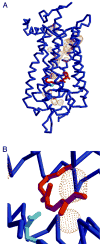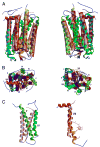Advances in determination of a high-resolution three-dimensional structure of rhodopsin, a model of G-protein-coupled receptors (GPCRs)
- PMID: 11425302
- PMCID: PMC1698954
- DOI: 10.1021/bi0155091
Advances in determination of a high-resolution three-dimensional structure of rhodopsin, a model of G-protein-coupled receptors (GPCRs)
Figures






References
-
- Kuhlbrandt W, Gouaux E. Curr Opin Struct Biol. 1999;9:445–7. - PubMed
-
- Caffrey M. Curr Opin Struct Biol. 2000;10:486–97. - PubMed
-
- Adler E, Hoon MA, Mueller KL, Chandrashekar J, Ryba NJ, Zuker CS. Cell. 2000;100:693–702. - PubMed
-
- Mombaerts P. Science. 1999;286:707–11. - PubMed
-
- Milligan G, Rees S. Trends Pharmacol Sci. 1999;20:118–24. - PubMed
Publication types
MeSH terms
Substances
Associated data
- Actions
Grants and funding
LinkOut - more resources
Full Text Sources
Other Literature Sources
Molecular Biology Databases
